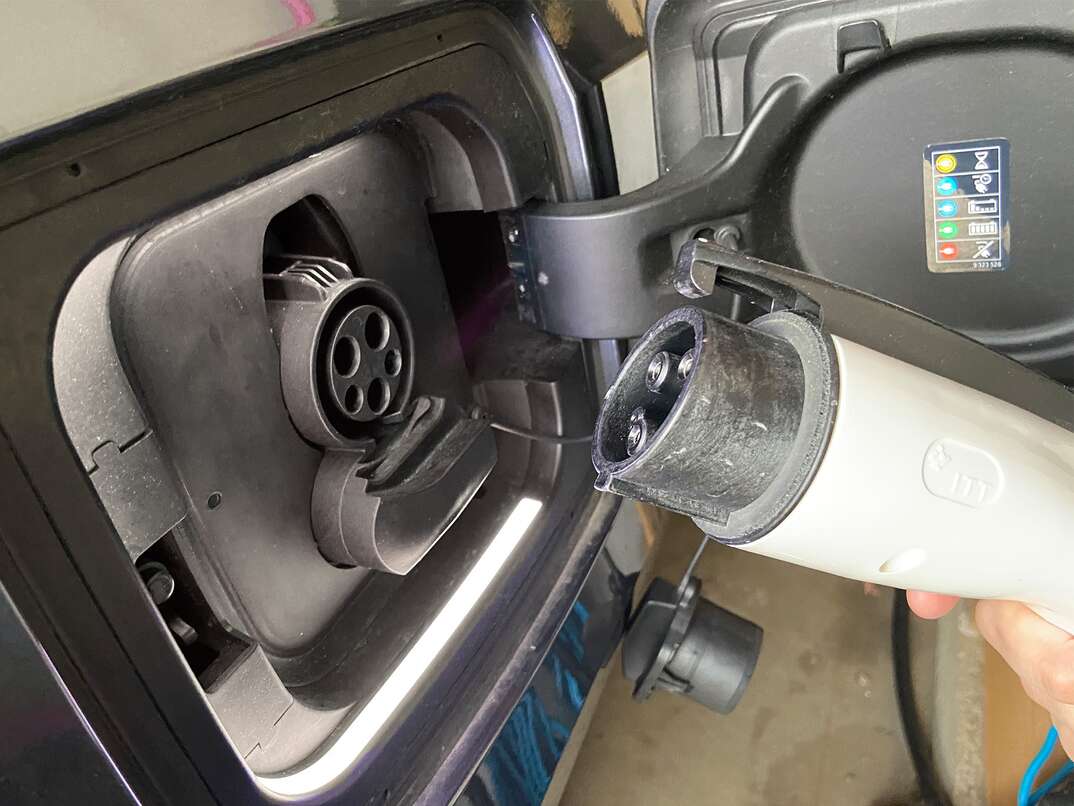- AppliancesElectriciansHVACLandscapingLocksmithPest ControlPlumbingRenovationRoofingT V RepairAll Home Improvement
- Car AccidentClass ActionCorporate LawCriminal DefenseDivorce LawEmployment LawFamily LawFinancial LawLegal AidMedical Injury LawyersMedical MalpracticeReal Estate LawWater Fire RestorationAll Legal
- InvestmentRetirementAll Finance
- Animal InsuranceAutoGeneral InsuranceHealth PolicyHome RentersAll Insurance
- DentalHealth SpecialistsAll Medical
- Animal CareVeterinaryAll Pets
- Auto GlassTowingAll Automotive
What Is Trickle Charging?

Your electric vehicle can save you money on fuel and maintenance, and with many of today's models boasting superior handling, it can even be fun to drive.
But if your EV sits unused in your garage, it can eventually run out of charge, leaving you stuck. If the thought of an uncharged car makes you long for your gas station days, trickle charging might be the answer.
Trickle charging is a process that replenishes an electric car’s battery gradually, using a low amperage over a longer period of time. Car battery trickle chargers typically put out between 1 and 3 amps, as opposed to regular chargers, which may put out as many as 50 amps during charging. By providing a slow, consistent charge, this method of charging is designed to prevent battery depletion, particularly if a car is left unused for an extended period.
How Does a Trickle Battery Charger Work?
A car trickle charger typically consists of the following components:
- A main box
- A power cable
- A red alligator clip
- A black alligator clip
To connect the charger to the battery, the red alligator clip attaches to the battery’s positive terminal, and the black clip attaches to a suitable ground location, such as a bare metal area on the vehicle’s frame. Once the charger is connected and turned on, the battery begins charging. Many trickle chargers can be left on a car for months.
Although trickle chargers may be considered a luxury, there are several notable advantages to using this type of battery charger.
- Reduced risk of battery damage due to overcharging: Because a trickle charger’s charge rate is typically the same as a battery’s natural discharge rate, you can't overcharge and damage the battery.
- Improved road-readiness: Because you can leave the battery connected to a trickle charger, even long-term, your battery is always road-ready, even if you don’t use your car regularly. That means your car is always available, which can be especially important in an emergency.
- Prolonged battery life: Slow charging is gentler on your car’s battery, so it may prolong its life, saving vehicle owners from having to purchase costly battery replacements.
- Reliable battery charging: Because trickle charging replenishes your car battery gradually, it can result in a more thorough, reliable charge.
However, in some cases, there may also be disadvantages to a trickle charger. For example, if you need to charge your car quickly, you’ll be better off using a standard car charger. Additionally, although trickle chargers are generally safe, some car batteries may also sustain damage from constant charging. In other cases, trickle charging may simply boost your battery rather than fully charging it.
More Related Articles
- How Do I Tell If an Electrical Issue Is Serious?
- Can One Bad Outlet Affect Others?
- How to Reset a GFCI Outlet
- What’s in My Electrician’s Van?
- 7 Ways to Save on Your Electric Bill
How Can You Choose the Best Trickle Charger?
The type of trickle charger you choose depends on your needs and how much money you want to spend. Simple, inexpensive trickle chargers typically only provide low-rate replenishment, while more expensive options may offer multiple charging modes. Automatic models, which automatically switch on or off depending on the battery’s charge, are also available, or you can opt for a smart trickle charger, which lowers the amperage automatically when a battery is nearing a full charge. This can reduce the generation of excess heat and minimize the risk of explosion. Units with float-mode monitoring typically turn off when the battery is fully charged.
Are Trickle Chargers Safe?
When charging a car battery, safety is paramount. Trickle chargers can safely be used to charge nickel-cadmium, nickel-metal hydride and lead-acid batteries. However, long-term trickle charging should never be used on lithium-ion batteries because it can damage the cell and cause hazardous conditions.
To ensure safety, electric vehicles should always be charged in a well-ventilated area that’s protected from the elements, regardless of the battery and charger type used. Additionally, you should never touch the wires of a battery charger while the unit is powered on. Before attaching and operating any type of battery charger, it's important to consult the manufacturer's instruction manual for additional safety precautions and contact the manufacturer directly, or ask a trusted mechanic, if you have any questions or concerns.
Elocal Editorial Content is for educational and entertainment purposes only. Editorial Content should not be used as a substitute for advice from a licensed professional in your state reviewing your issue. Systems, equipment, issues and circumstances vary. Follow the manufacturer's safety precautions. The opinions, beliefs and viewpoints expressed by the eLocal Editorial Team and other third-party content providers do not necessarily reflect the opinions, beliefs and viewpoints of eLocal or its affiliate companies. Use of the Blog is subject to the
Website Terms and Conditions.The eLocal Editorial Team operates independently of eLocal USA's marketing and sales decisions.



